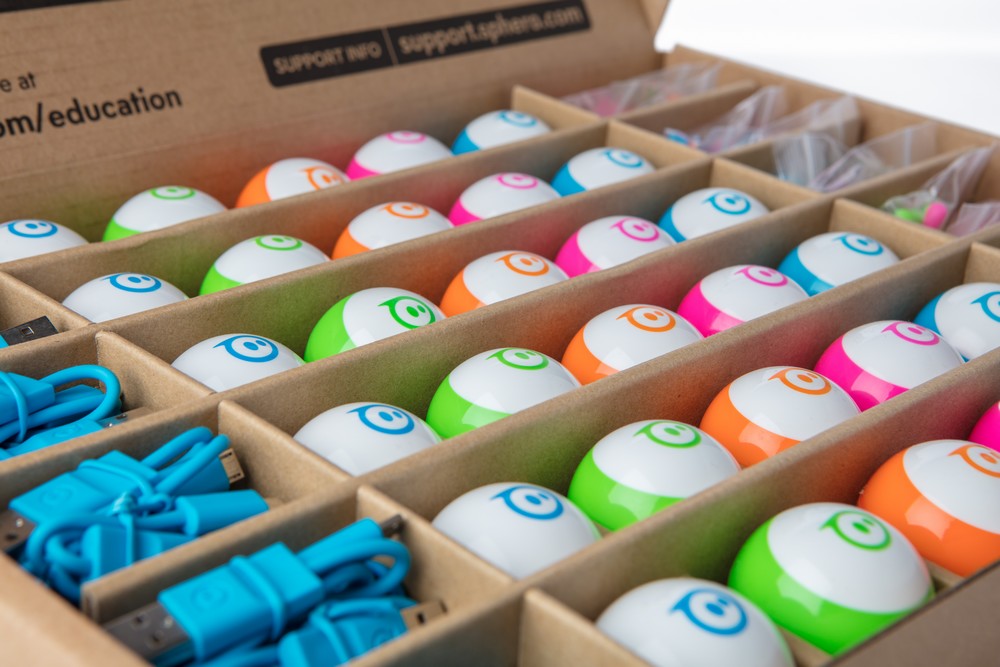
Sphero Edu app has a mesmerizing feature that lets you view the Bolt's sensor data in real time as a program runs.
#SPHERO EDU GAMES CODE#
When I couldn’t figure it out on my own, I found a tutorial made by a community member and studied their code to figure out what I did wrong. For example, one Block tutorial asked how you would go about making the Bolt roll in a triangle but didn’t provide an answer. That usually didn’t deter me, but occasionally there were steps with critical thinking questions that don’t quite work for a solo user, such as “How do you think Sphero can recognize when it’s spinning or rolling? Do you know of a sensor that might do this? What other devices can recognize rotation?” Kids won’t be able to confirm the answer without a teacher.Īlternatively, if a child is ambitious enough they can use these open-ended steps as a challenge. Still, I’ve yet to encounter a difference that significantly confused me.Īll of the Sphero-made tutorials I explored were clearly written for classrooms. For one, they think there’s a “Lights and Sounds” section, but I have a separate “Lights” and “Sounds” sections on my iOS app. Through Sphero’s Block tutorials, I was easily able to make Sphero roll around in a perfect square, transform into a Hot Potato, play a random animal sound when tossed and display different lights and brightness depending on the direction and speed of its revolution.Īt the time of writing, Sphero’s Block tutorials were slightly outdated. This makes it easy to compare block code with real JavaScript, especially if using two displays. You can also see what your block program looks like in real JavaScript. If for some reason you just want to play with the thing and not learn (what kid would want that?), Drive mode lets you control Sphero with a joystick, alter it’s speed, change the color of its LEDs and their brightness. Activities lets you access tutorials within the app shared by Sphero and the community, and it also has a Workbook section for saving different tutorials you’re working on and tracking your progress. Programs stores all the codes you write and also has sections for viewing codes shared by Sphero and Sphero owners.
#SPHERO EDU GAMES PLUS#
Home offers a live feed of Sphero users sharing programs, plus 3D models of different Sphero robots, your profile, including username / photo, and Settings, which includes links for Sphero’s JavaScript Wiki, blog, support and contact. The app has four sections: Home, Programs, Activities and Drive.
#SPHERO EDU GAMES UPDATE#
Even the firmware update is educational, simultaneously displaying trivia like “In 1840 Ad Lovelace paved the way for women in programming as one of the first computer programmers in the world.” There are also teachings on sensor types, angles and degrees, LED lights and some physics, for example. The lessons teach you basics, like coding terms and thinking in code, as well as get you to create programs to do things like turn the Bolt into a Hot Potato game, display different images on its LED matrix or move around in different shapes. Sphero makes multiple-lesson tutorials, accessible online or through the app, to introduce users to each form of writing code. To program Sphero, you need to write code in the Sphero Edu app, either through drawing, block coding or writing JavaScript. However, you can program the Bolt to drop stabilization. In fact, even with the Bolt off, it will automatically spin to this orientation, no matter what way you place it down. The Bolt spins inside itself to stay balanced, keeping its light matrix on top and ballast weight on the bottom. It handles movement with two encoders (tracking movement and distance) and two motors. To stay balanced, the Bolt uses an IMU (inertial measurement unit), which reads the accelerometer (measures acceleration), gyroscope (rotation speed). There’s also a magnetometer for finding North and auto-aiming the Bolt so that it’s tail light is facing you, which is required to run any program. These messages can fulfill a conditional and execute a certain portion of a written program. Sphero has four infrared red emitter and receiver pairs, which can be used to send and receive messages to another Bolt.

It’s plenty bright, especially with that clear shell holding nothing back. Each of those lights can hit a brightness of 200 lumens, which is approximately 33% that of a 60-watt lightbulb.

All of these lights are programmable, and the blue one is used to aim Sphero so you know what direction it’s facing. Outside of the 8x8 RGB LED matrix sitting at the top center of the Bolt, it has two RGB LED lights, plus one backlight that can only be blue.


 0 kommentar(er)
0 kommentar(er)
